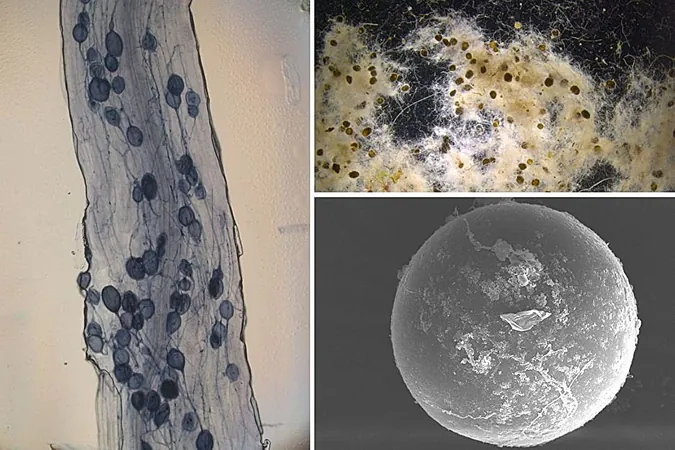
Unlocking Nature's Secrets: The Power of Mycorrhizal Fungi and Soil Bacteria in Agriculture
2025-04-16
Author: Mei
For centuries, plants and arbuscular mycorrhizal fungi have thrived together in a remarkable, mutually beneficial partnership. These fungi invade plant roots, enhancing their ability to absorb essential nutrients, while the plants repay the favor by providing vital carbon. As Mohamed Hijri, a professor at Université de Montréal, puts it, "These fungi are biotrophs; they depend on plants for their nutrient supply."
Once inside the plant root, these fungi create intricate structures known as arbuscules, bridging the gap between plant and soil.
Agriculture Takes Notice
Today, the agricultural industry is keenly focused on harnessing this natural association, seeking to replicate its benefits to foster healthier, more productive crops. This interest comes amid growing needs for sustainable farming practices that reduce reliance on chemical fertilizers.
Nature’s Nutrient Network
While many plants can survive without mycorrhizal fungi, the unseen network of whitish filaments known as extraradical mycelium plays a crucial role in enhancing nutrient and water absorption. Zakaria Lahrach, a Ph.D. student under Hijri, describes these fungi as extensions of the roots that broaden the plant's reach into the soil.
Yet, there’s more to this partnership than meets the eye. Scientists are uncovering the complex ways these fungi interact with soil bacteria. Amazingly, these fungi give back carbon to the soil, attracting bacteria that decompose organic matter and release critical nutrients that plants can then absorb.
Impact on Climate Change
This dynamic means that fungi not only nourish plants but also sequester carbon, helping to combat climate change—a fact that has piqued the interest of climate scientists.
A Ph.D. Journey into Fungal Dynamics
In his quest for knowledge, Lahrach explored how arbuscular mycorrhizal fungi draw in soil bacteria and facilitate the availability of phosphate, an essential nutrient for plant growth. After two years of diligent experimentation, his findings were published in Environmental Microbiome last October.
Diverse Fungal Species in Action
Lahrach's research centered on three fungal species—Rhizophagus irregularis, Rhizophagus clarus, and Rhizophagus cerebriforme—and their ability to attract bacterial communities. He even tested how adding external bacteria could influence this recruitment.
With months spent in greenhouses and collecting samples, Lahrach emphasized the uniqueness of their study, which disentangled the individual effects of plants and fungi on bacterial recruitment.
Ecosystem Architects
The results were striking: all three fungal species enhanced the growth of leeks (Allium porrum) by boosting shoot and root biomass and chlorophyll levels. Despite their genetic similarities, each fungus attracted different bacterial communities, effectively shaping their experimental ecosystems. Notably, introducing additional bacteria only yielded benefits in the presence of fungi, underscoring their pivotal role in plant development.
These fungi essentially act as conductors, orchestrating nutrient access for plants, as Hijri describes them as a "transmission belt" connecting soil microbes to roots.

 Brasil (PT)
Brasil (PT)
 Canada (EN)
Canada (EN)
 Chile (ES)
Chile (ES)
 Česko (CS)
Česko (CS)
 대한민국 (KO)
대한민국 (KO)
 España (ES)
España (ES)
 France (FR)
France (FR)
 Hong Kong (EN)
Hong Kong (EN)
 Italia (IT)
Italia (IT)
 日本 (JA)
日本 (JA)
 Magyarország (HU)
Magyarország (HU)
 Norge (NO)
Norge (NO)
 Polska (PL)
Polska (PL)
 Schweiz (DE)
Schweiz (DE)
 Singapore (EN)
Singapore (EN)
 Sverige (SV)
Sverige (SV)
 Suomi (FI)
Suomi (FI)
 Türkiye (TR)
Türkiye (TR)
 الإمارات العربية المتحدة (AR)
الإمارات العربية المتحدة (AR)